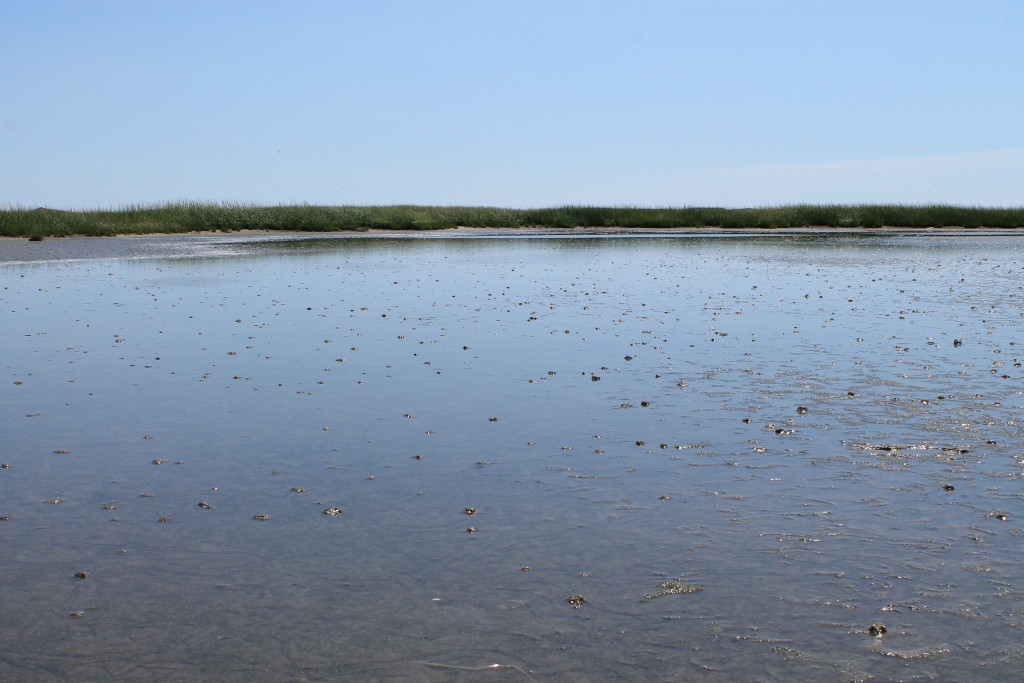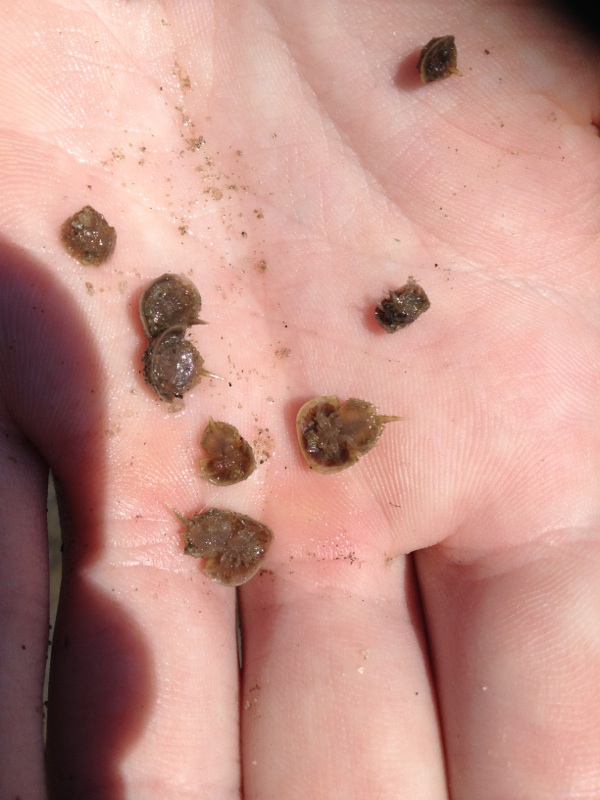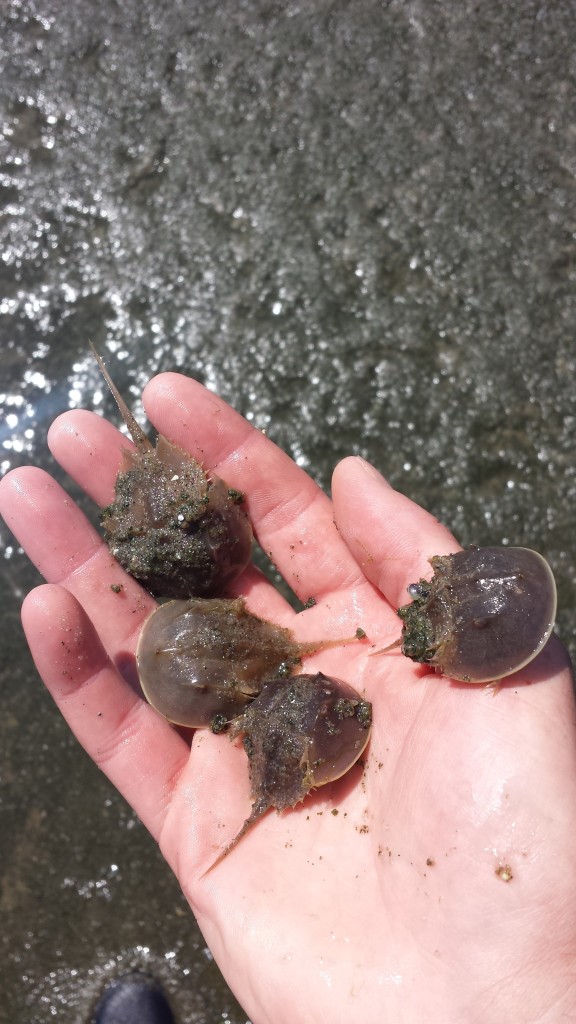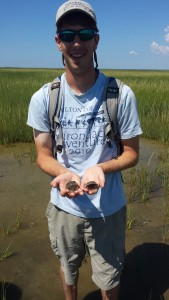As the sanctuary works to assess the status of Wellfleet Bay’s horseshoe crab population, another question that requires an answer is how successful the animals are at replacing themselves and sustaining their numbers.
To answer this, we first need to know if there are any juvenile crabs in Wellfleet Bay and, if so, where they are. Secondly, we need to determine the best method for estimating their population. Until this summer, we haven’t had much luck answering those questions.
Juvenile horseshoe crabs range from pea-sized to palm-sized and inhabit the sand and silt of low energy tidal environments, such as protected coves and salt marsh creeks. In these habitats, safe from swift currents, they burrow through the surficial sediment, feeding on small marine invertebrates.

Young horseshoe crab habitat at North Monomoy in Chatham (photo courtesy of Mass. Division of Marine Fisheries)
In some locations, such as the Monomoy National Wildlife Refuge, juvenile horseshoe crabs are abundant and are reliably found in low energy environments. However, in Wellfleet Bay, locating juvenile crabs has been more of a challenge.
Unlike adult horseshoe crabs surveys, which can occur at any time of day, excursions in search of juveniles can only occur at low tide, since that is when their preferred habitat is most accessible and when they are most active. However, even at low tide, searching for juvenile crabs is complicated because there are daily variations in the spatial distribution of the juveniles due to the variability in the extent of the tide. A further complication is that juveniles occur in a wide range of sizes, making it difficult to know which size classes are present in a given area and, therefore, what size crabs to look for.
After several unsuccessful attempts this summer, we finally succeeded in finding hordes of tiny, juvenile horseshoe crabs here in the sanctuary salt marsh. These crabs ranged in size from 3 to 7 millimeters in width, the smallest possible size class, and due to their tiny size they had, until now, simply managed to escape our notice.

Recently hatched tiny horseshoe crabs at Wellfleet Bay Wildlife Sanctuary (photo courtesy of Mass. Division of Marine Fisheries).
Having just recently unearthed the whereabouts of the juvenile horseshoe crabs here at the sanctuary, we are still only beginning to learn about horseshoe crab recruitment in Wellfleet Bay. However, assuming we find comparable numbers of juvenile horseshoe crabs in more locations and acquire a better understanding of their relationship to and distribution throughout certain habitats, we can then move forward from the discovery phase to the drawing board to figure out the best way survey their numbers.
This blog post is by Colyer Woolston, who graduated in 2014 from Hamilton College where he majored in environmental studies. He lives in Denver.



